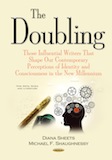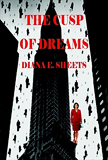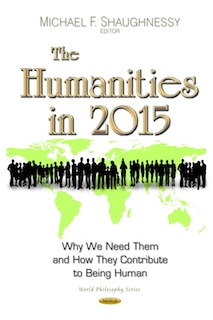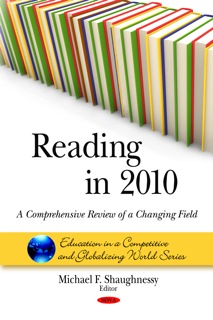Tom Wolfe Got It Right
Copyright © 2007 by Diana E. Sheets
Ba ba baba babba babababa bababababababaaaaaaaaaaa BOOM!
The first salvo Tom Wolfe launched against the literary novel was a collection of essays and nonfictional excerpts published in 1973 entitled The New Journalism. The purpose of Wolfe’s exposition was to explain why the “New Journalists,” writers of creative nonfiction, had displaced the “Neo-Fabulists,” a.k.a. literary novelists, as the preeminent authors of written stories. He then demonstrated the potency of the New Journalism by means of several examples. It was Wolfe’s contention that “high-brow” fiction abdicated its royal seat when its writers shifted their focus from social realism to the phantasmagorical realm of delusion, what today is often characterized as “consciousness.” Wolfe argued that these fanciful ruminations contributed little to our understanding or appreciation of social realities and resulted in the public becoming disenchanted. Into the void came the New Journalists, who incorporated literary techniques into their descriptions of characters navigating the known world.
And just what were these techniques the New Journalists pilfered from the Neo-Fabulists in order to usurp the throne? Only the most basic, the most dramatic, means of bringing a story alive: scene-by-scene construction of events as they unfold (showing)—as opposed to historical narrative (telling)—vivid and extended dialogue, shifting points of view that placed the reader inside the head of characters in order to view events through their eyes, and finally, Wolfe argued, focusing on “society, the social tableau, manners and morals, the whole business of ‘the way we live now’”(that last phrase borrowed from Trollope).
Fiction reigned supreme, according to Wolfe, from 1875-1965 during which time it was grounded in realism. But by the early sixties, the Neo-Fabulists had created an alternative realm in which so-called novels of ideas, Freudian musings, Kafkaesque stasis, and surrealistic temporalities prevailed. By then, only lowly commercial writers concerned themselves with social reality. The departure of literary fiction from reality, Wolfe suggested, ensured that there would be no novelist remembered for capturing America or even New York as Thackeray chronicled London in the 1840’s or Balzac described Paris and, indeed, all of France after the collapse of the empire. Fiction had abrogated its exalted mission to present the “hulking carnival” we call life, which, in the sixties, was a resplendent freak show.
a universe of creamy forty-five-year-old fashionable fatties with walnut-shell eyes out on the giblet slab wearing the hip-huggers and the minis and the Little Egypt eyes and the sideburns and the boots and the bells and the love beads, doing the Watusi and the Funky Broadway and giggling and grinning and sweating and sweating and grinning and jiggling until the onset of dawn or saline depletion, which-ever came first. . . .
This gapping hole in American letters was rapidly filled by the New Journalists, writers such as Gay Talese, Jimmy Breslin, Truman Capote, Hunter S. Thompson, Joan Didion, and many others. In 1968, Tom Wolfe took the opportunity to present the “hulking carnival” in his tour de force, The Electric Kool-Aid Acid Test, an experimentation with stream of consciousness and shifting points of view that provided the reader with a psychotropic reality show starring Ken Kesey and his gang.
As Wolfe noted in “Stalking the Billion-Footed Beast” (Harper’s Magazine, November, 1989), even after the book was published, “I was worried that somebody out there was writing a big realistic fictional novel about the hippie experience that would blow The Electric Kool-Aid Acid Test out of the water.” Wolfe waited. And waited. And waited. Thirty-five years later, T.C. Boyle managed to revive some of the madness of that era in his novel
Informed readers know the outcome. Wolfe published his first novel, Bonfire of the Vanities, in 1978. No fictional tale has better described
Geeeeeeeezzzzzzzzzzzz.
So right that as real-life events unfolded with the tragic-comic characters—Bernhard Goetz, Tawana Brawley, and Reverend Al Sharpton—readers of the novel, viewers of the televised news, all of those trying to get a pulse of the times, couldn’t help wondering, “How could he have known? How could Tom Wolfe have anticipated all that had happened?” And yet, those of us who had taken the time to listen, to look, to watch, to read, and to walk the beat couldn’t help muttering, “Unh-huh!” in appreciation of Wolfe’s ability to illuminate the spectacle of New York City and, indeed, America in the late 1980’s.
In “Stalking The Billion-Footed Beast: A literary manifesto for the new social novel,” Wolfe fired the second barrage in 1989 in his effort to restore the primacy of the realistic novel engaged in dramatizing the social milieu. In that essay, he suggested that the golden age of realism occurred from 1900-1939, an era when fiction reigned supreme and readers hungered for literary depictions of life. Writers such as Theodore Dreiser, John Steinbeck, John Dos Passos, Edith Wharton, Sinclair Lewis, Ellen Glasgow, Sherwood Anderson, Willa Cather, Ernest Hemingway, Scott Fitzgerald, Zora Neale Hurston, and William Faulkner were engaged in social realism.
By contrast, Wolfe characterized the Neo-Fabulists, who came into dominance by the 1960’s, as mythmakers, not engaged with the world. Action, if it occurred in their fiction at all, was unspecified. Their settings were undefined. Their characters were never described in any convincing detail and possessed no back story. The Neo-Fabulists avoided sentiment, emotion, and realism. Something was dreadfully wrong. For as Wolfe noted in his manifesto, esteemed literary writers such as Kafka, Borges, Nabokov, Beckett, Pinter, Kundera, Calvino, Márquez, and their North American emulators—Hawkes, Barth, and Coover—although clearly talented, had forsaken reality for illusion and, in the process, abandoned the greatest material and the most compelling stories to be told.
Many of these writers were brilliant. They were virtuosos. They could do things within the narrow limits they had set for themselves that were more clever and amusing than anyone could have ever imagined. But what was this lonely island they had moved to? After all, they, like me, happened to be alive in what was, for better or for worse, the American century, the century in which we had become the mightiest military power in all history, capable of blowing up the world by turning two cylindrical keys in a missile silo but also capable, once it blew, of escaping to the stars in spaceships. We were alive in the first moment since the dawn of time in which man was able at last to break the bonds of Earth’s gravity and explore the rest of the universe . . . .
What a feast was spread out before every writer in
With the publication in 1998 of Tom Wolfe’s second novel, A Man in Full, came enemy fire from three of
John Updike, Norman Mailer, and John Irving’s criticism can be distilled down to a single premise: A Man in Full is not a literary novel. The implicit reasoning goes as follows: realism and plot-driven stories are déclassé. They’re quotidian, describing the banality of everyday existence. Literary fiction is exalted: it is about the life of the mind, removed from the asphalt of day-to-day life.
In retrospect, this debate about what constitutes literary fiction, which began in 1973 and, to all appearances, concluded in 2000, was noteworthy for two reasons. First, it was a sustained argument over what constitutes great literature, although, ultimately, the criteria were heavily weighted in favor of “interiority” at the expense of social realism. Underneath the bristling egos and male bravura was the larger issue of whether a novel of ideas in the late 20th and early 21st century might legitimately be assessed as a great novel if its content addressed in realistic detail the society in which we live. Ultimately, what was most telling about this dispute was not the ferocity of the battle but that no other literary writer supported Tom Wolfe in his defense of social realism.
In Hooking Up, published in 2000, Wolfe forcefully responded to the criticisms of Updike, Mailer, and Irving in his essay “My Three Stooges.” But it was his plea, yet again, to resuscitate the beleaguered novel by restoring realism that proved most affecting.
The American novel is dying, not of obsolescence, but of anorexia. It needs . . . food. It needs novelists with huge appetites and mighty, unslaked thirsts for . . .
On
Readers buckle up. Realists despair not. My novels, The Cusp of Dream and American Suite are forthcoming. And, like Tom Wolfe’s fiction, will provide the readers with a tilt-a-whirl spectacle of this “hulking carnival” we call life.









